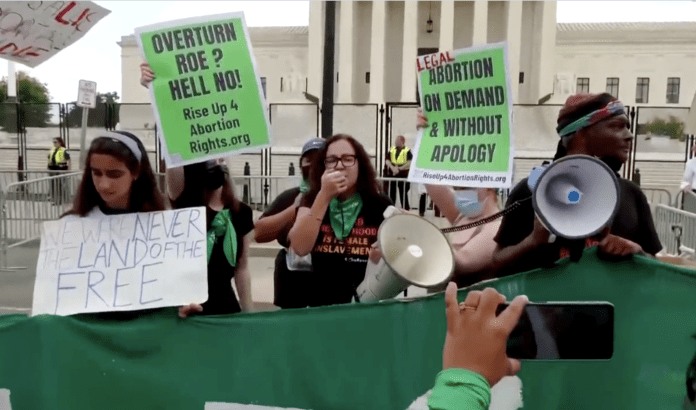Roe V. Wade was overturned in America on June 24, 2022 – eliminating American’s the constitutional right to abortion.
This decision leaves it up to the individual state to decide whether to allow abortions there, and will most likely lead to all but total bans on the procedure in nearly half the country.
The 6-3 ruling will completely change the landscape of women’s reproductive rights in the US.
“What is happening here?” House Speaker Nancy Pelosi reacts to the Supreme Court’s decision to overturn Roe v. Wade.
Follow for live updates here: https://t.co/C8ZuxOFGMj pic.twitter.com/OPP3wzbaa2
— CNBC (@CNBC) June 24, 2022
The decision comes a month after a 98-page opinion obtained by ‘Politico’ — allegedly authored by Justice Samuel Alito and leaked to the press in a major breach of confidentiality — stated that “Roe was egregiously wrong from the start.”
The draft document, labeled as the “Opinion of the Court,” also said: “We [the Supreme Court majority] hold that Roe and Casey [another ruling on the right to abortion from 1992 which upheld the previous court decision] must be overruled.”
“It is time to heed the Constitution and return the issue of abortion to the people’s elected representatives.”
Roe v Wade was a landmark decision of the U.S. Supreme Court on January 22, 1973, in which the Court ruled that the Constitution of the United States generally protects a pregnant woman’s liberty to choose to have an abortion.
The Supreme Court’s move to overturn Roe v Wade has sparked outrage worldwide, and hundreds have already gathered outside the Capitol building in protest.
We’re live outside the Supreme Court after the nation’s highest court ruled to overturn Roe v. Wade and the fundamental right to abortion that has been the law for almost 50 years. https://t.co/bRjazATtOo
— ABC News (@ABC) June 24, 2022
Prior to the verdict, Elizabeth Nash, state policy analyst at the Guttmacher Institute, a research group focused on abortion rights, told PEOPLE that the country will likely “start to see states, particularly the South, the Plains and Midwest, look to adopt abortion bans.”
Twelve states, including Mississippi and Texas, already have “trigger” laws in place that would automatically ban abortions.
“And that would make it very hard for a large percentage of women in the country to access abortion care in their own state. It means a lot more people would have to travel for care,” Nash said.
The US Supreme Court just overturned Roe v. Wade.
Does that mean abortion will become illegal? Here’s what you need to know about the ruling https://t.co/5xc1nrrsMj pic.twitter.com/E3lrKjCNN2
— Bloomberg (@business) June 24, 2022
“And the people who are most impacted by these abortion restrictions and bans are people of color, low-income individuals, young people and LGBTQ individuals — people who are already burdened with insufficient access to healthcare.”
There are, however, other efforts to maintain the right to abortion.
States like New York, California, Hawaii and Washington have statutory protections for abortion rights in their laws.

